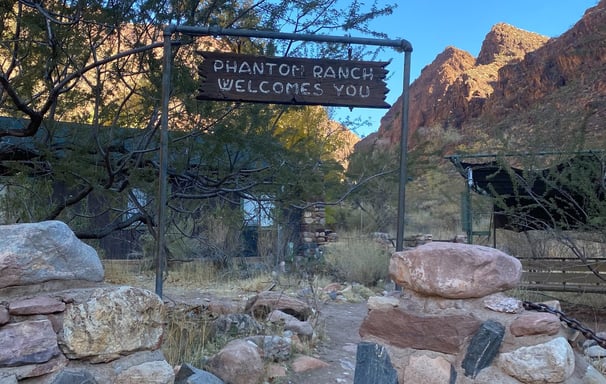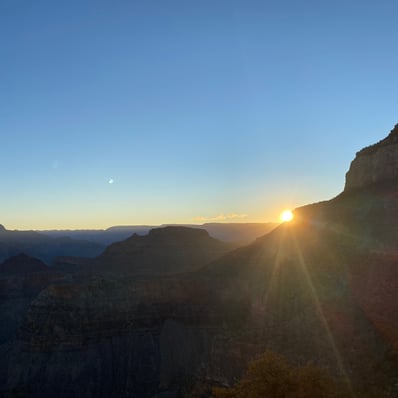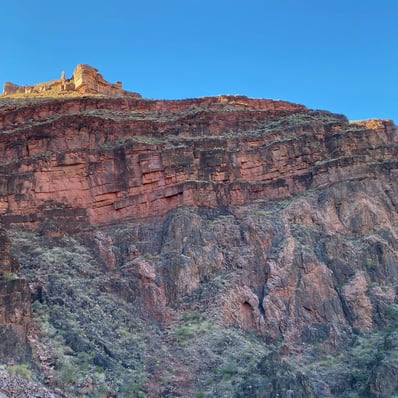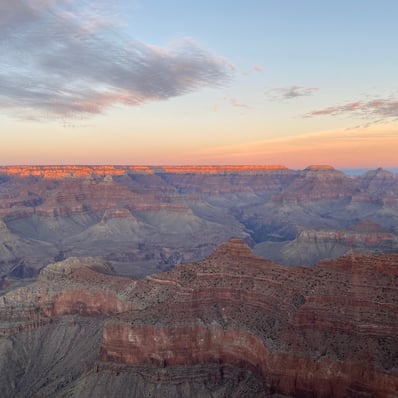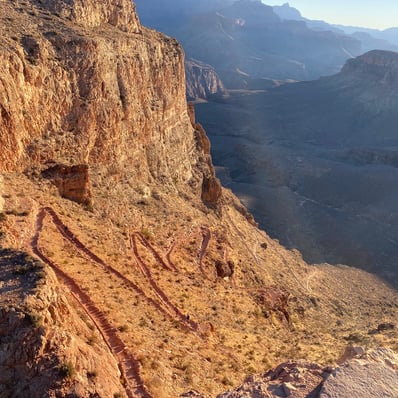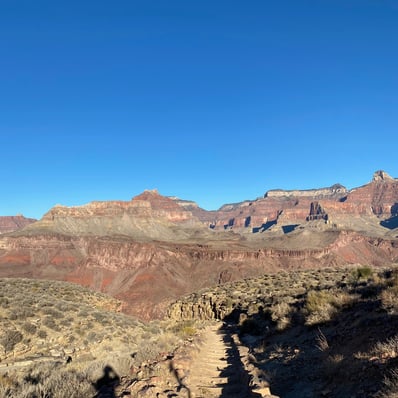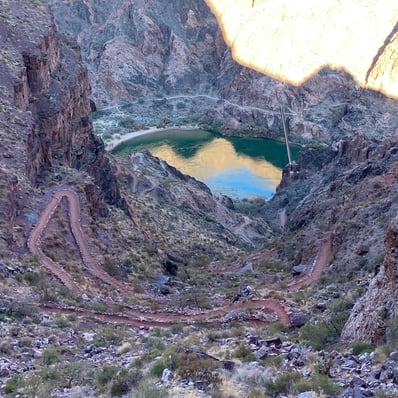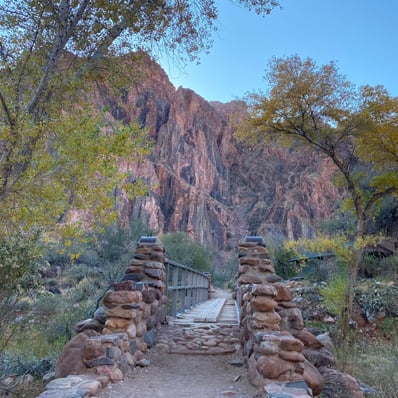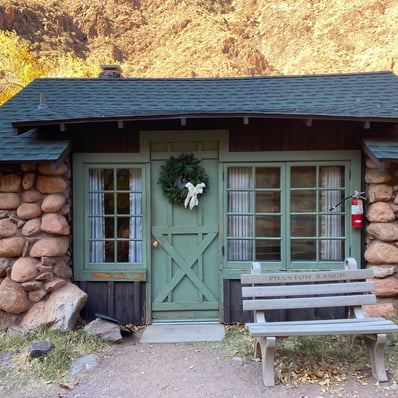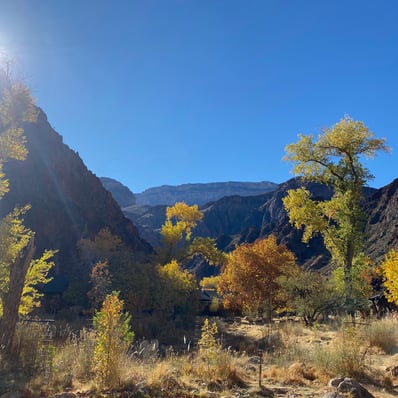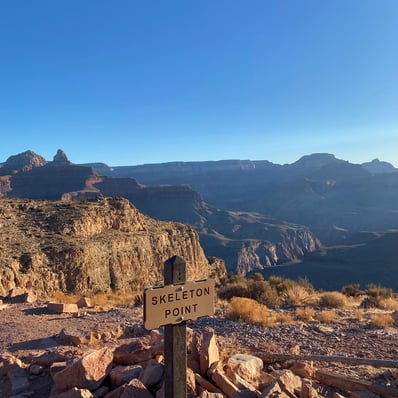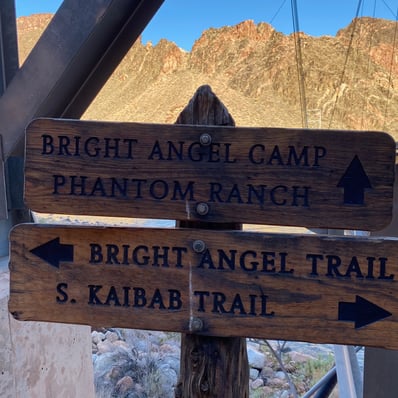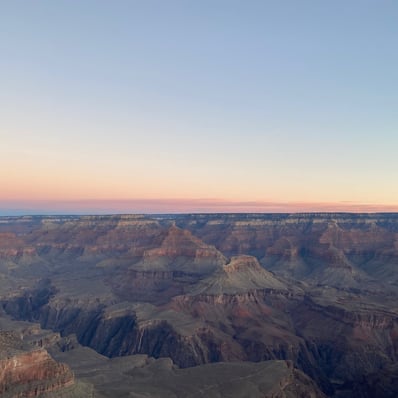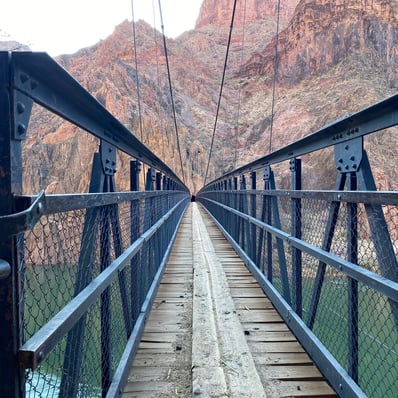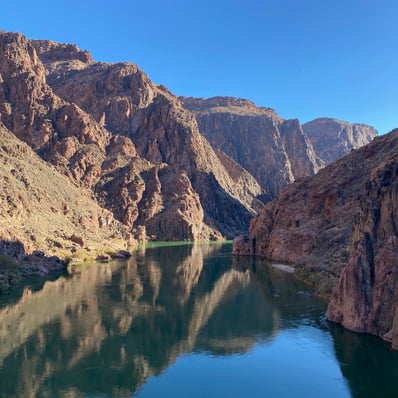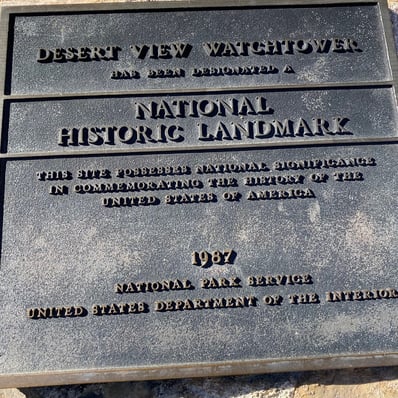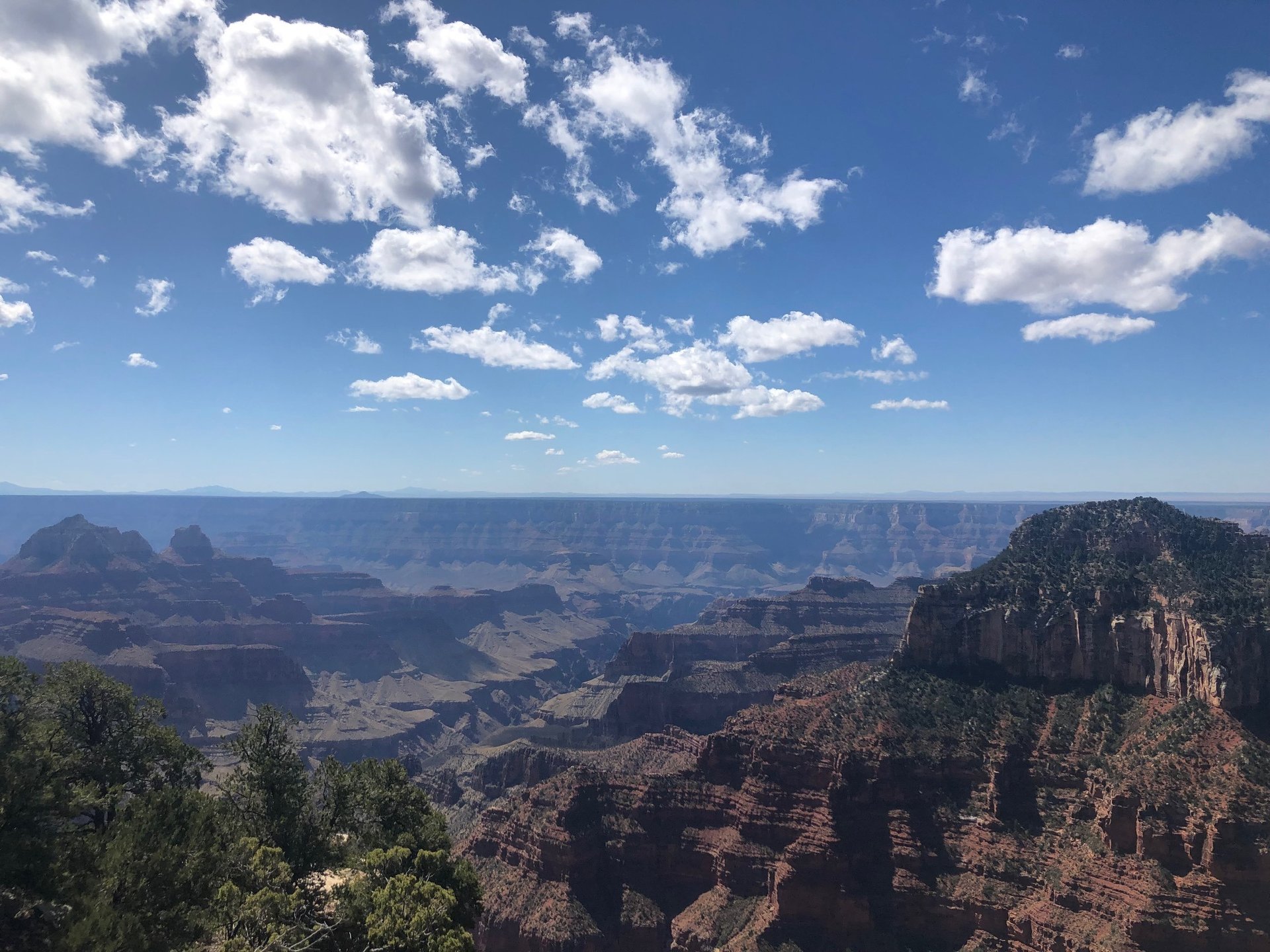
Grand Canyon National Park
Northern Arizona, USA
General info about the park
Grand Canyon National Park is world famous for its sweeping vistas and distinctive red rock bands. Its enormous walls have been carved over the millennia by the mighty Colorado River.
Grand Canyon National Park was established in 1919 and covers 1.2 million acres with over 5 million visitors annually. The canyon's average depth is 1 mile, average width from rim to rim is 10 miles, and its length is reported at 277 miles.
There are a number of ways to experience the park. Let's start with it's two distinctive access points: North Rim & South Rim... (note that despite the relatively short distance from rim to rim, it takes nearly 4 hours (over 200 miles) to drive from one side to the other as there are no bridge crossings over the river)
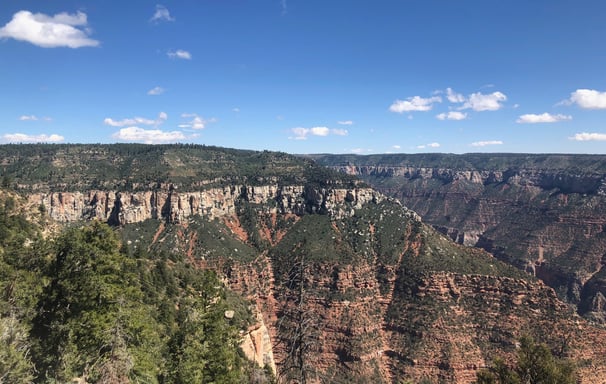

North Rim
Usually accessed by road trippers coming from southern Utah, the lesser travelled "North Rim" of the Grand Canyon only sees about a 10% share of the overall visitors to this national park. The North Rim is usually only accessible from mid-May to mid-October as it's 8,000 foot elevation brings a harsher climate and more dramatic winter weather than its southern counterpart. Although the distance from the North Rim Visitor Center to the South Rim Visitor Center is less than 15 miles across, the North Rim frequently sees average temperatures about 10 degrees cooler than the South Rim which can make for a more pleasant experience if visiting in the summer. Visitors are pleasantly surprised at the North Rim's forested surroundings (the Kaibab National Forest) and it's solitude.
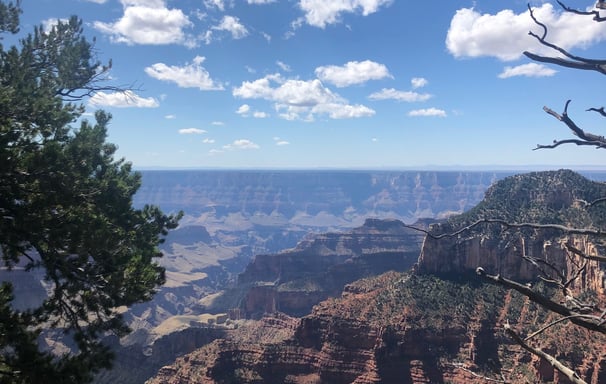

South Rim
This highly trafficked area of the park is the main access point and provides easier access from major cities such as Las Vegas and Phoenix. Home to extraordinary viewpoints and an iconic 23 mile access road (Desert View Drive) providing visitors of all ages with dramatic vistas of the canyon that they will not soon forget. This side of the canyon offers more services, stores, and options for camping and lodging as well.
As the South Rim stays open year round, it's very important to understand that the crowds in the summer can be extreme and average summer temperatures can reach into the 100s Fahrenheit. It's imperative to hydrate and wear sun protection.
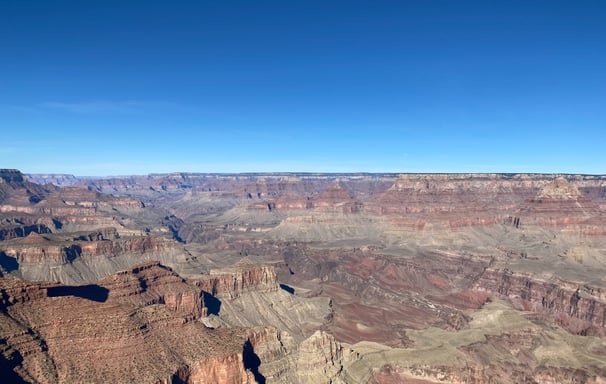

Bright Angel & the Kaibab Trails
For an epic day hike, you can navigate the incredible Bright Angel and/or Kaibab Trails. The Bright Angel Trail can be done in its entirety as a 15.3 mile out-and-back or connect with the South Kaibab Trail for a very difficult 16.7 mile point to point trail that will challenge hikers with 4,800 feet of elevation gain. Depending on the season, you can also famously hike from "rim to rim" on the Bright Angel and North Kaibab Trail (or vice versa) which will put you at 24.6 miles with 5,575 feet of elevation gain. Whichever of these routes you choose, be sure that you are very well conditioned and well prepared for the elements with enough food and water for these intense hikes. These rewarding experiences are recommended for hikers with years of experience and should not be attempted alone.
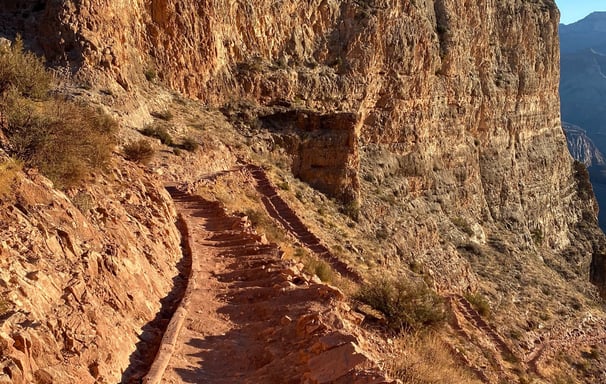

Desert View Drive
This scenic portion of SR 64 begins near the Grand Canyon Village at the South Rim and stretches 23 miles to the East Entrance of the Grand Canyon National Park taking visitors on an enchanting drive with majestic viewpoints where you can park and take in the amazing scenery. At the further east viewpoint, the Desert Watchtower still remains from 1932 and is recognized as a National Historic Landmark. Here you can visit the tower including the upper floors and read more about the history of the park, the tower, and indigenous tribes.
The east entrance station would be used if continuing on towards northwestern Arizona or the North Rim of the canyon.
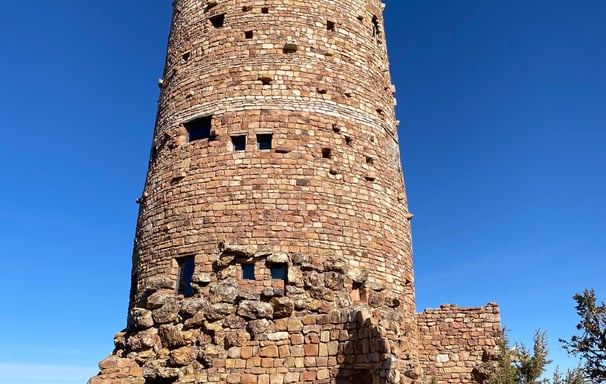

Colorado River
This immensely powerful river runs for nearly 1,500 miles including the 277 miles through Grand Canyon National Park. Besides its natural beauty, the Colorado River provides drinking water for over 40,000 million people as it bookends the two largest dams and reservoirs in the United States. On its northeastern end lies the Glen Canyon Dam (completed in 1963) which feeds into Lake Powell in Page, Arizona and on its southwestern end, the Hoover Dam (completed in 1936) which feeds into Lake Mead in Nevada.
You can hike along the Colorado River in Grand Canyon National Park and cross the "Black Suspension Bridge" (also known as the Kaibab Trail Suspension Bridge) which has been recognized as a National Historic Civil Engineering Landmark.
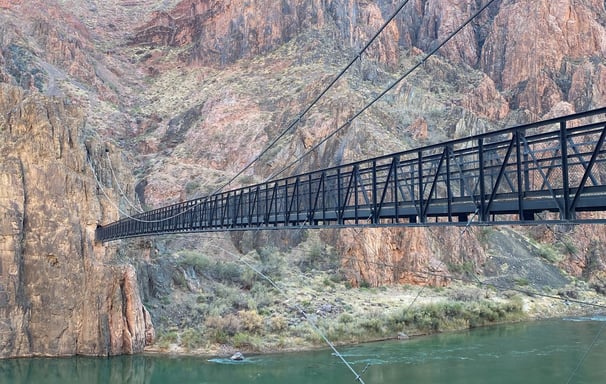

Phantom Ranch
This historic lodge completed in 1922 lies on the north side of the Colorado River adjacent to the Bright Angel Creek at the bottom of the Grand Canyon. It's the only lodging facility in the canyon and is a popular stopover for day hikers and mule riders. The ranch has accommodations for up to 80 people including a dozen cabins plus dormitories, but must be reserved via a lottery system up to 15 months in advance. More information about this lottery system and booking a room at Phantom Ranch is accessible on the Grand Canyon National Park's website. Please note the ranch can only be accessed by foot, mule, or raft as it lies 5,000 - 6,000 feet below the canyon rims where most visitors enter the park.
